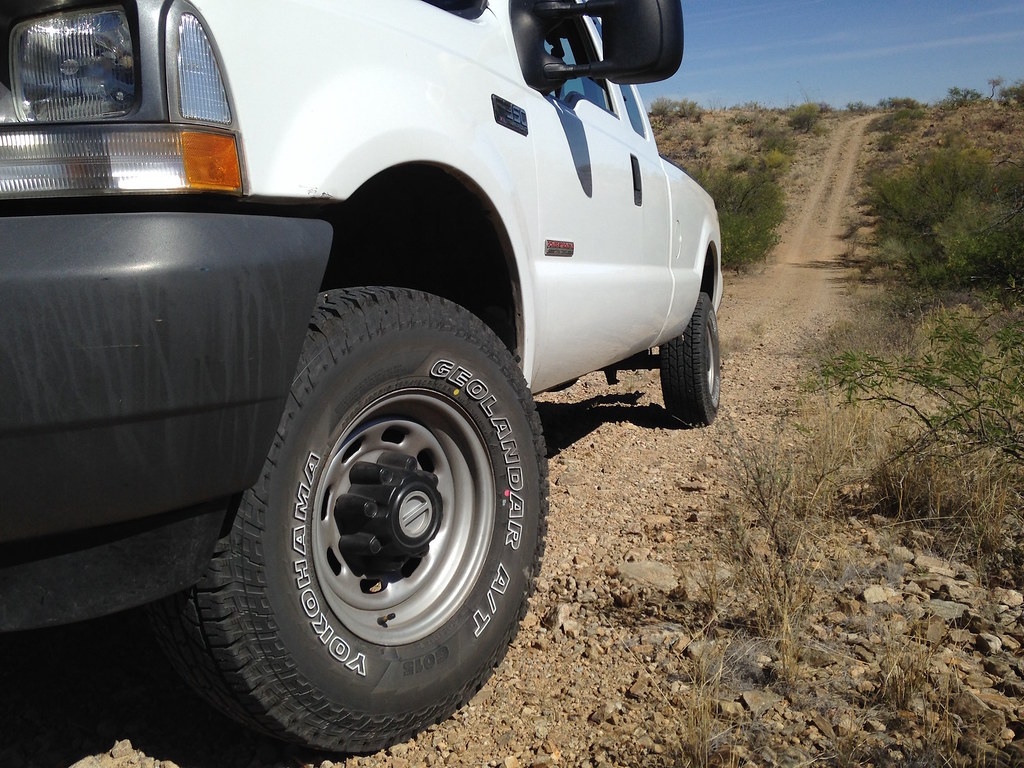Buy the tire you need, not the one you want
Recently I received a set of the all-new Yokohama Geolandar AT GO15 tires to review for OutdoorX4 magazine. While sold as an “all terrain” tire, the tread on this Geolandar looks mild compared to many similarly marketed tires. And that got me to thinking about overlanders and our tire choices.
It’s natural to gravitate toward an aggressive tread design when buying tires for a four-wheel-drive vehicle. A more aggressive tread means better traction in steep or loose terrain, right?—which is why we have four wheel drive in the first place, right? And besides—let’s be honest—a mud-terrain tire just looks cooler than a more street-oriented “AT” tire. If appearance has never, ever entered into your tire-buying decision you’re a more logical thinker than I am.
Obviously, however, there are logical aspects to tire selection besides traction. The most critical of these—in fact the most critical of all— is safety. A street-biased tire with more closely spaced, shallower tread blocks will exhibit significantly better grip for both handling and braking than one with hyper-aggressive, open-blocked tread. That aspect could quite literally be a lifesaver in the right (wrong) scenario.
Fuel economy is a factor as well. When I switched from BFG All-Terrains to BFG Mud-Terrains on my FJ40 (partially because, yep, they just looked better) my fuel economy dropped by almost exactly one mile per gallon—and one mile per gallon on an FJ40 makes a difference, let me tell you. Then there’s tread life. Those closer tread blocks translate to less squirm, which translates to longer tread life given the same compound. Finally, even with modern computer-designed tread, aggressive tires tend to be louder at high speed, which can be a fatigue factor on long drives.
All these advantages to street-biased tires are obviously mostly advantageous on the street, and that’s where logic butts up against romance. Most of like to think we spend more time off pavement than we actually do. The reality is, if more than ten percent of the miles you put on your overland vehicle are actually off pavement, you are quite an adventurer. I’m not sure Roseann and I hit that, and we cover seven miles of dirt road just to reach our house. Much more frequently a backcountry journey will entail several hundred miles of highway and maybe 40 or 50 miles of trails. Thus, for most of us, for most of our time behind the wheel we would enjoy better handling, braking, fuel economy, and tread life with a less-aggressive tire choice. And we wouldn’t have to crank up the sound system so much to count how many times Terry Gross says “like” or “um” in one interview. Sorry, personal gripe.
Where was I? Right: There’s an additional factor to consider for those of us who own modern vehicles with sophisticated ABS-based traction systems and hill-descent control: We have more and better inherent traction available to us than we did when driving older vehicles with simple part-time four-wheel-drive systems. So we can enjoy just as much off-pavement ability with a less-aggressive tire—as anyone can confirm who’s watched Land Rover’s LR4s on street tires negotiate the Overland Expo driving course.
So the next time you buy tires for your overland vehicle, consider carefully—and logically. Do you really need those BFG Mud-Terrains, or would the All-Terrains perform better most of the time? For that matter, would BFG’s Rugged Trail suit your needs? Get the tire that works best, not the one that looks best. Then you can smile condescendingly at the guy driving by in the jacked up truck riding on those howling Super Swampers.

